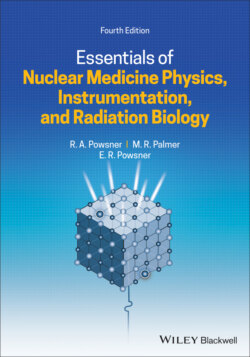Читать книгу Essentials of Nuclear Medicine Physics, Instrumentation, and Radiation Biology - Rachel A. Powsner - Страница 23
Isotopes, isotones, and isobars:
ОглавлениеEach atom of any sample of an element has the same number of protons (the same Z: atomic number) in its nucleus. Lead found anywhere in the world will always be composed of atoms with 82 protons. The same does not apply, however, to the number of neutrons in the nucleus.
Figure 1.10 Standard atomic notation.
Figure 1.11 Nuclides of the same atomic number but different atomic mass are called isotopes, those of an equal number of neutrons are called isotones, and those of the same atomic mass but different atomic number are called isobars. Stable nuclear configurations are shaded gray, radioactive configurations are white.
(Adapted from Brucer, M. Trilinear Chart of the Nuclides, Mallinkrodt Inc, 1979.)
An isotope of an element is a particular variation of the nuclear composition of the atoms of that element. The number of protons (Z: atomic number) is unchanged, but the number of neutrons (N) varies. Since the number of neutrons changes, the total number of neutrons and protons (A: the atomic mass) changes. The chemical symbol for each element can be expanded to include these three numbers (Figure 1.10).
Two related entities are isotones and isobars. Isotones are atoms of different elements that contain identical numbers of neutrons but varying numbers of protons. Isobars are atoms of different elements with identical numbers of nucleons. Examples of these are illustrated in Figure 1.11. Nuclide is a general term for the composition of a nucleus and includes isotopes, isotones, isobars, and other nuclear configurations.
